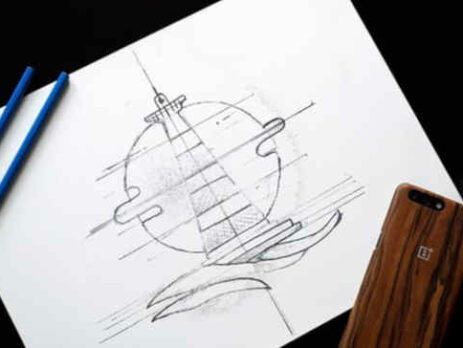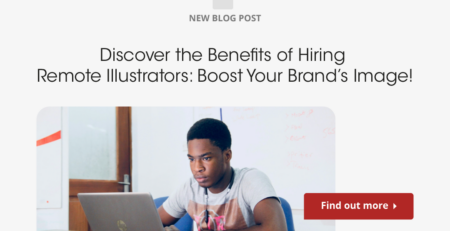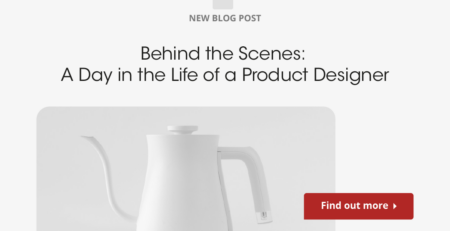Why Logo Designs Are An Integral Part of the Branding Kit
A brand kit contains all the details of a branding identity plan and specific instructions for how the identity will be rolled out. It’s imperative for communicating design ideas to stakeholders and for the creative team to get a visual layout of their work. The logo design is a critical part of the design kit because it encapsulates everything else inside the kit and it will likely be the first thing people see connected to the brand.
There are other important parts to a branding kit, of course, but they all rise and fall on the success of the logo. It should present the same general design thinking as the rest of the branding kit in a concentrated package. Everything should reinforce the ideas in the logo for maximum cohesiveness.
Designing logos in 2020 has seen lots of great ideas from many companies. It’s no wonder why companies spend so much time on their logos and invest so much in updating them regularly to stay competitive. Whether you’re a designer who builds branding kits or a stakeholder who wants to understand the design thinking behind logos, the information and branding kit tips in this guide should be a huge help to you.
History of Logos
Humans have been using small images to represent bigger ideas for thousands and thousands of years. Logos were used to label bars and roadside directions several hundred years ago and modern logos in the branding sense first began appearing around the beginning of the 20th century. Tons of stylistic and functional aims have been attempted with logo design in all those years.
In their earliest forms, logos were simple and direct. A tavern might have a tankard of ale on it, for example. These days, logos are much more sophisticated and rely heavily on human psychology. Advanced theories of design’s emotional impact are used to construct symbols that will bring about emotional response and hopefully lead the viewer to some call to action.
Signage and the Psychology of Logos
We’re surrounded by signs that tell us where to exit a building, where and how fast to drive our cars, what street we’re on, warn us of danger, and many more. Signage contains within it a coded action representation that the viewer considers before potentially changing their behavior in some way. People are free to disobey signs, of course, but for the most part, they are informative, useful, and nearly ubiquitous tools.
The idea with logos is to provoke a similar decision-making process by crafting a symbol that condenses a brand identity and presents it as a coded action representation. When you see the logo for a fast-food restaurant, the coded action is to eat. The logo can’t do all that by itself, but other forms of advertisement that constantly refer back to the logo can imbue it with that codified meaning.
In that sense, the call to action of the user-based design is concentrated on the logo. Everything else in the design kit is brought to mind by the appearance of the logo. Like a crystal ball, the symbol of the brand holds much more within it after repeated introduction than it does at first sight.

Key Characteristics of an Effective Logo
You might be recalling popular logos and comparing them in your mind, only to realize that they don’t have all that much in common. So what is the key to an effective logo? Here are a few characteristics of a strong logo:
- Simplicity
People aren’t going to stare at a logo for an extended period. You can build one with tons of detail, but once people have linked that logo to the product or service, they’ll likely start to register its appearance unconsciously. For that reason, the best logos are designed to be simple and immediately recognizable.
One of the latest design trends has been to simplify existing logos. Top brands have reduced their logos to the simplest parts, with some even going so far as to remove the text completely. They don’t have to be basic icons, but logos shouldn’t have a photographic level of detail, either.
- Memorability
Closely related to the concept of simplicity is the idea that a good logo should be memorable. If there are tons of details in the design, people will have a hard time remembering it. On the other hand, if it has a unique design and color scheme, your logo will be very easy to recall.
Remembering a logo makes it easier to tie that brand to a certain action or idea. An appealing design will cause people to replace the product with the brand, which is great for turning them into return customers. If you sell a generic product like hamburgers, for example, then having your logo come to mind first will be very lucrative.
- Evocative
We identify more closely with things that bring out our emotions. In the case of branding logos, we’re also more likely to engage with products that make us feel something. Not all emotions are created equal, though; you’re better served with a logo that makes people feel curious, happy, or excited than with one that makes people angry, confused, or sad.
Evocative logos also grab people’s attention and makes them want to show others. You can stir emotions with logos that depict emotions or you can tap into the wealth of universal and near-universal symbols such as the epic hero, animals, or famous figures. The important thing is to make a logo that resonates with people.
- Targeted
Great logos have broad appeal and timeless relevance. You might not want to use a snowflake logo if you sell camping gear year-round and you certainly don’t want to limit your audience to a certain age group, ethnicity, or other background. Even children’s toys tend to have logos that appeal to the adults who actually pay for them.
Similarly, you should know who engages with your product. Just like UX/UI designers build personas, so should graphic designers when they’re trying to build an appealing logo. Look for concrete information on who the real people are who buy the product, don’t rely on an imagined target market.
Designing Logos in 2020: The Latest Trends
While this year saw a lot of huge changes it also heralded in some brilliant new design thinking and tons of interesting work from art departments around the world. For one thing, most people were on the internet far more than usual and thus computer and internet literacy is likely to have increased. Logo design largely took that consideration to heart.
Huge companies like Heinz and BMW pared down their logos and removed extraneous effects like drop shadow and glare. Famous travel website TripAdvisor and site host GoDaddy both went monochrome and flattened their graphics. Durex, Popeye’s Chicken, and Adobe also flattened their designs.
By and large, the trend was toward simplicity in 2020. This isn’t a brand new shift but rather a continuation of design thinking that first started to appear in the new millennium. Designing logos in 2020 might seem overly simplified, but remember that these designers had to be very selective about what they keep to make sure the more basic-looking logos still have the same affect on the viewer.
Brands like MasterCard and Netflix have demonstrated how color can be included in a branding identity. Both logos have also been simplified to their bare essentials. There’s no way to be certain, but these companies couldn’t possibly get much more simplified so a trend toward more complex logos might be in order in the next decade.
What Else is in a Branding Kit?
Now that we’ve covered some of the most crucial aspects of logo design, let’s talk about the rest of the branding kit and how it all comes together with the logo to form a cohesive and appealing brand identity.
Brand identity describes the more human elements of a brand besides the direct visual characteristics. The branding kit is essentially a layout of your brand’s best strategy for stakeholders within the company and for external contacts who might use the logo such as journalists.
Besides the logo, a branding kit should have a color palette, typesets, and restrictions about size and use. You should also include notes about messaging, targets, and voice, as well as some contact information. This kit will most likely be published on the internet so you must take care to include all the instructions people need to use your logo and branding consistent with the overall brand identity.
Visual examples of how to use and not use your logo and other branding materials are always helpful. Specifying typesets and the voice of the brand will also help people avoid mischaracterizing your brand and save you from having to explain away a mistake or backtrack something someone else did.
7 Branding Kit Tips for Building an Identity
So, how can you use these branding kit elements and a well-built logo to fully express the brand? Here are a few branding kit tips to use to make your next design clear and effective.
1- Be Clear for Uniform Touchpoints
If your branding materials are presented in an inconsistent manner, say at varying sizes or with changes to the logo orientation or color scheme, your messaging is going to be shot. Plus, people won’t know when it’s coming from a legitimate source and when it’s nust someone on the internet posting your logo for some othe reason.
A branding kit is built to prevent this exact scenario, but it will only work if you are very specific about how to use the logo and other branding materials. Point out what colors to use and not use, what backgrounds are appropriate, what font works, and what, if any, effects are appropriate.
2- Paint a Picture With Your Personas
A list of facts does not a persona make. Give readers a person with likes, dislikes, fears, and logic. It should be clear why this person is – and is not – buying the product. These personas are the illustration of why the design thinking behind the branding works. The more detail the better, just make sure it stays relevant.
You should also be basing these personas off of extensive user research. As always with personas, make sure you are talking about the actual users and not the ideal ones or the ones the company imagines as a target market. Personas should have goals, motivations, pain points, influences, and brand loyalties like all people do.
3- Develop a Voice Naturally
Even the best content writers need to take time to learn to write in a brand’s voice. Otherwise, all their articles would just be the writer’s voice and all the client companies’ branding would suffer.
Building the voice for a brand requires some idea of the ideal customer, the real ones, the appeal of the product, and the condition of the market. If the market is tanking and you’re selling indulgent food with a luxurious tone, you risk coming across as arrogant or worse.
To fully develop a brand voice, set out what you and your product are and are not. Remember the mission statement and the main business goals. Research your audience and your competition to create a voice chart that sets out how the brand’s voice should look and sound.
4- Trust, Authority, and Authenticity
Three of the main feelings you need to instill in your target audience are trust, particularly that your company isn’t fibbing about how gret your product is; authority, namely that you know what you’re talking about; and authenticity, or a realness of attitude and a readily apparent earnestness and faith in the company’s mission.
The whole point of the branding kit is to create these feelings in the viewer. The logo should exude the authenticity, authority, and trust people get from the rest of the brand identity. Once the logo has come to signify all these traits, people will respond to it positively as soon as they see it.
5- Cater to a Niche, Then Expand
If you’re just starting out with a branding project and there isn’t a large following for the company or product, go ahead and find the most loyal people and broadcast to them. Slowly you can widen the net and your branding might change as more people come to like the product. Don’t write in a voice that outsiders won’t like or understand or else you’ll never get to the point where you’re expanding your market.
To find your niche, you’ll have to build up a solid number of people who have used your product and liked it. You’ll also need to get them to fill out questionnaires or participate in other user research so you can make your product and your branding mor effective.
6- Tell a Story
Good design is storytelling and it’s no different with logos and branding kits. One of the best branding kit tips, though, is to treat it like it’s a first-person narrative. You’re telling the story of your brand and if you want people to respond positively you have to tell them the whole story in an honest way.
We’ve all heard brand origin stories where a few friends get together and form a company that just happens to get big. Even if this is the bare outline of the story, it’s become trite with repetition. Try explaining the origin of the product by explaining what it is, why people need it, ad why you personally care about it.
7- Try a Surprising Personality
It’s easy to imagine a high-end watch company adopting the voice of a sleek professional, but what if you tried another tactic or blended that professionalism with something people aren’t expecting like spontaneity, friendliness, or openness? The better you can blend in other personalities, the more intriguing your branding and voice will be.
If you can somehow manage to surprise people in the same way with your logo, so much the better. Just make sure the branding voice isn’t completely divorced from the logo or else people won’t retain the two together in their minds.

Conclusion:
Logos are a highly concentrated version of the rest of the branding kit. They are the first thing people are likely to see that’s linked to the brand and as such people are most likely to center logos in their memory and vizualization of a brand.
For anyone designing logos in 2020, simplicity has been one of the most popular trends. Hopefully some of the branding kit tips in this article will come in handy on your next branding project. Just remember your mission statement and keep it centered while you build a logo and at every step in the branding process.












